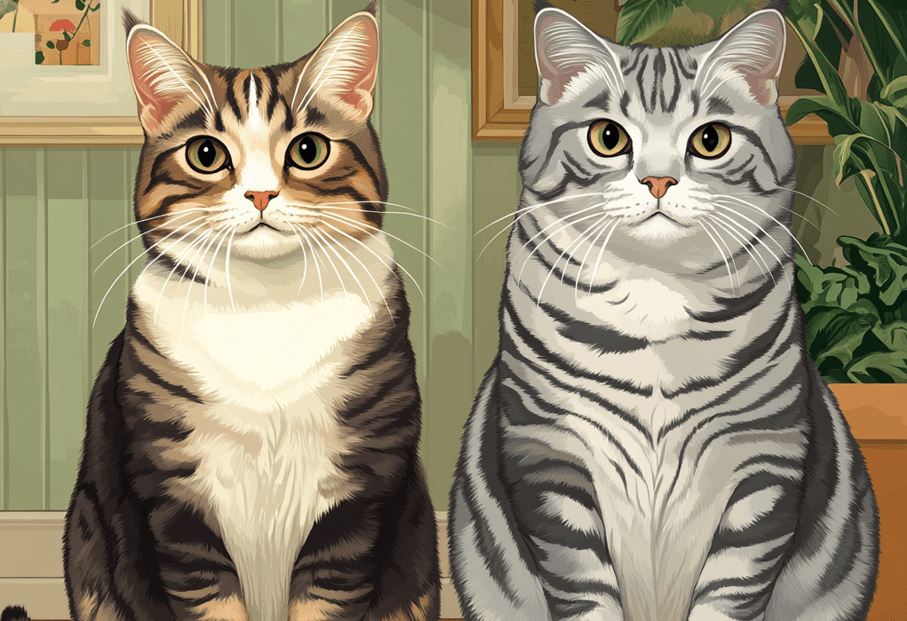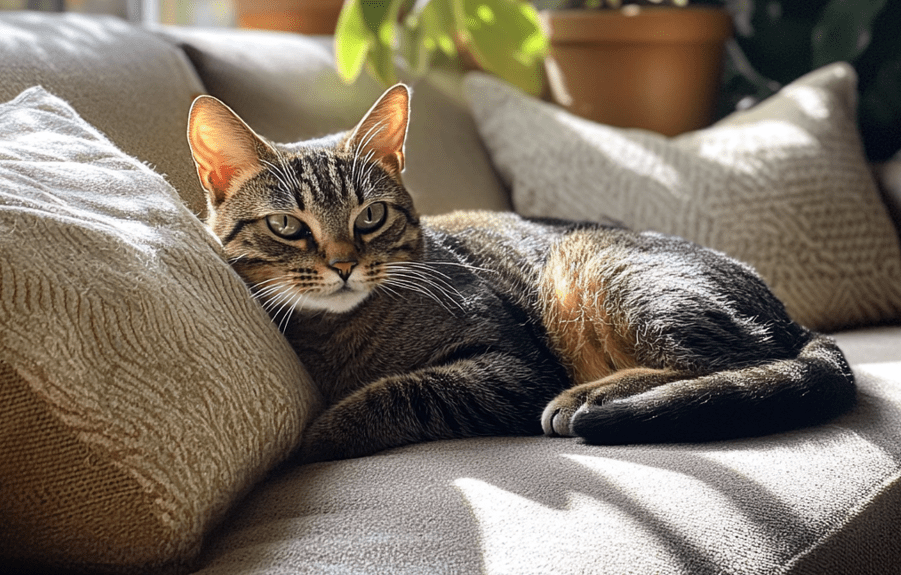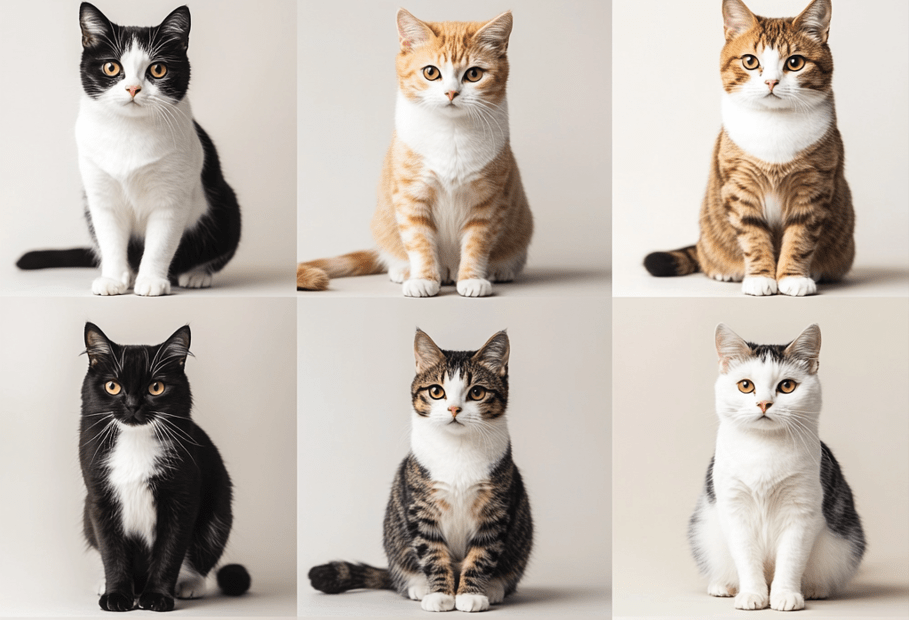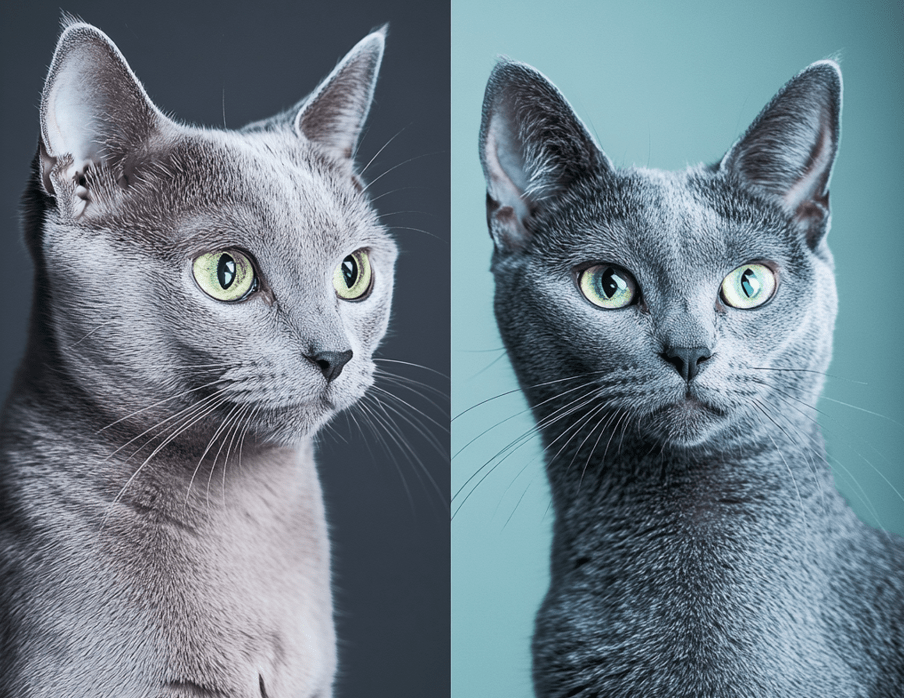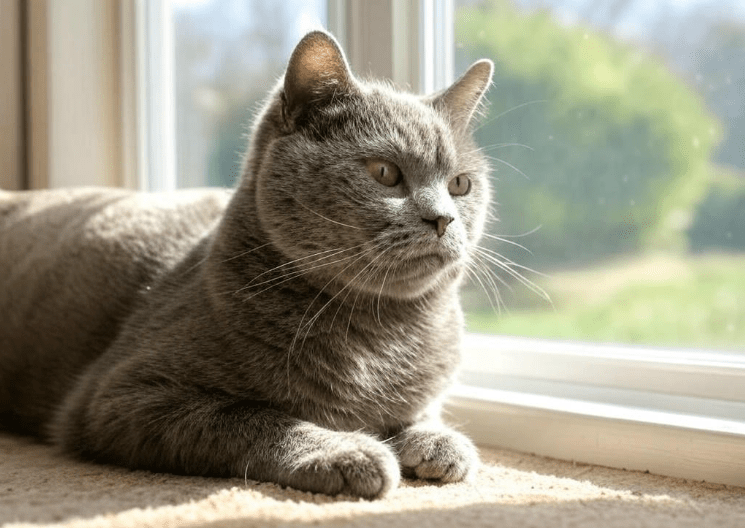
Flea infestations can be a nightmare for Domestic Shorthair cat owners, causing discomfort and health issues for their beloved pets. Choosing the right flea collars for Domestic Shorthairs is crucial to ensure effective protection and safety. This comprehensive guide explores the best flea collars and treatments tailored for Domestic Shorthairs, offering insights into their benefits, safety considerations, and application tips. Whether you’re dealing with an active infestation or seeking preventive measures, this article will help you make informed decisions to keep your cat healthy and flea-free.
Understanding Fleas and Their Impact on Domestic Shorthairs
Fleas are tiny, parasitic insects that feed on your cat’s blood, leading to itching, skin infections, and even serious health conditions like anemia or tapeworm infections. Domestic Shorthairs, with their short, dense coats, are particularly susceptible to flea infestations because fleas can easily hide in their fur. Recognizing the signs of fleas—such as excessive scratching, red or irritated skin, or small black specks (flea dirt)—is the first step to addressing the problem.
Flea collars and treatments are designed to kill adult fleas, prevent new infestations, and sometimes target flea eggs and larvae. For Domestic Shorthairs, selecting products that balance efficacy with safety is essential, as their sensitive skin can react to harsh chemicals.
Why Flea Collars Are a Popular Choice
Flea collars for Domestic Shorthairs are a convenient and long-lasting option for flea control. Unlike topical treatments or oral medications, flea collars provide continuous protection, releasing active ingredients over several months. They’re easy to use, cost-effective, and ideal for cats that dislike baths or oral treatments. However, not all flea collars are created equal, and choosing the right one depends on your cat’s needs, lifestyle, and any existing health conditions.
Top Flea Collars for Domestic Shorthairs
Below, we review the best flea collars for Domestic Shorthairs, focusing on safety, effectiveness, and suitability for this breed. Each product has been selected based on veterinary recommendations, user reviews, and ingredient safety.
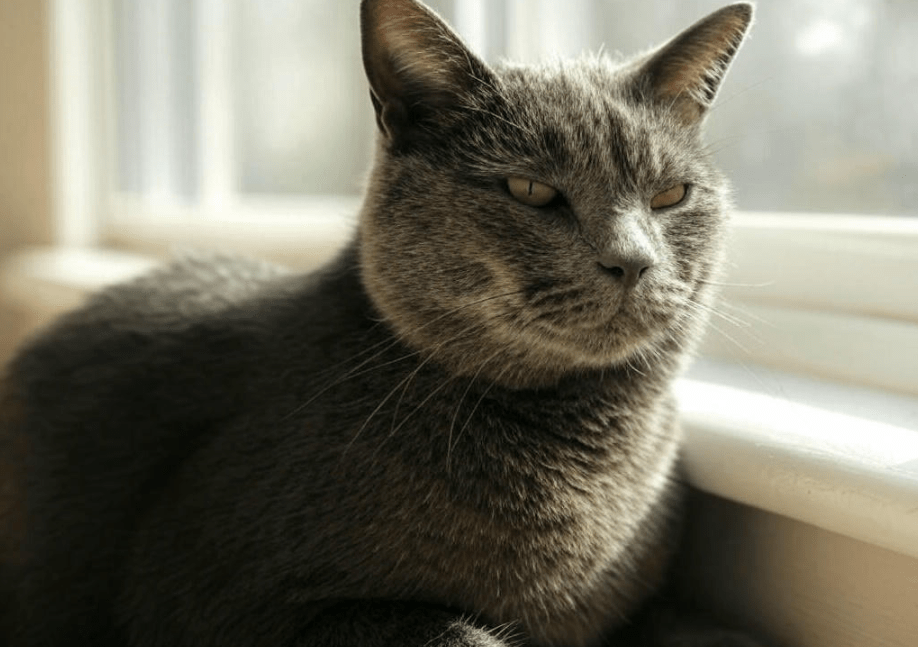
1. Seresto Flea and Tick Collar for Cats
The Seresto Flea and Tick Collar is a top choice for Domestic Shorthairs due to its long-lasting protection (up to 8 months) and dual action against fleas and ticks. It uses imidacloprid and flumethrin, which are released slowly to kill fleas on contact without requiring them to bite your cat.
Pros: Waterproof, non-greasy, odorless, and safe for cats over 10 weeks old.
Cons: Higher upfront cost, though cost-effective over time.
Best For: Domestic Shorthairs with active outdoor lifestyles.
Tip: Ensure the collar fits snugly with two fingers’ space between the collar and your cat’s neck to prevent irritation.
2. Hartz UltraGuard Plus Flea & Tick Collar
The Hartz UltraGuard Plus collar is a budget-friendly option that provides 7 months of flea and tick protection. It contains tetrachlorvinphos, an organophosphate that kills adult fleas and prevents eggs from hatching.
Pros: Affordable, water-resistant, and includes a breakaway safety feature.
Cons: Strong odor initially; not as effective for severe infestations.
Best For: Indoor Domestic Shorthairs with mild flea issues.
Note: Monitor your cat for skin reactions, as some Domestic Shorthairs may be sensitive to the active ingredients.
3. Bayer Advantage II Flea Collar
This collar integrates with Bayer’s Advantage II topical treatment technology, offering 6 months of flea protection. It uses imidacloprid and pyriproxyfen to target fleas at all life stages.
Pros: Lightweight, adjustable, and effective against flea eggs and larvae.
Cons: Not waterproof; less effective against ticks.
Best For: Domestic Shorthairs in multi-pet households where fleas spread easily.
4. Only Natural Pet EasyDefense Flea & Tick Collar
For owners seeking a natural alternative, the Only Natural Pet EasyDefense collar uses essential oils like geraniol and peppermint to repel fleas and ticks. It’s free from synthetic pesticides, making it ideal for sensitive Domestic Shorthairs.
Pros: Non-toxic, eco-friendly, and safe for kittens over 4 months.
Cons: Shorter duration (3-4 months); less effective in heavy flea areas.
Best For: Indoor cats or those with chemical sensitivities.
Complementary Flea Treatments for Domestic Shorthairs
While flea collars are effective, combining them with other treatments can enhance protection, especially during severe infestations. Here are some veterinarian-approved options:
1. Topical Treatments
Topical treatments like Frontline Plus or Revolution are applied to the back of your cat’s neck, killing fleas and preventing re-infestation. These are ideal for Domestic Shorthairs with dense coats, as they penetrate the skin effectively.
How to Apply: Part the fur and apply directly to the skin, avoiding contact with your cat’s mouth or eyes.
Frequency: Monthly applications for continuous protection.
2. Oral Medications
Oral flea treatments, such as Capstar or Comfortis, provide fast-acting relief by killing adult fleas within hours. These are best for immediate infestation control but don’t offer long-term prevention.
Considerations: Consult your vet, as some Domestic Shorthairs may experience mild digestive upset.
3. Flea Shampoos
Flea shampoos, like Adams Plus Flea & Tick Shampoo, are useful for bathing your Domestic Shorthair during an active infestation. They kill fleas on contact but don’t provide residual protection.
Tip: Use lukewarm water and rinse thoroughly to avoid skin irritation.
4. Environmental Treatments
Fleas often live in your home, hiding in carpets, bedding, and furniture. Use environmental sprays like Vet’s Best Flea & Tick Home Spray or wash your cat’s bedding weekly to break the flea life cycle.
Safety Considerations for Flea Collars and Treatments
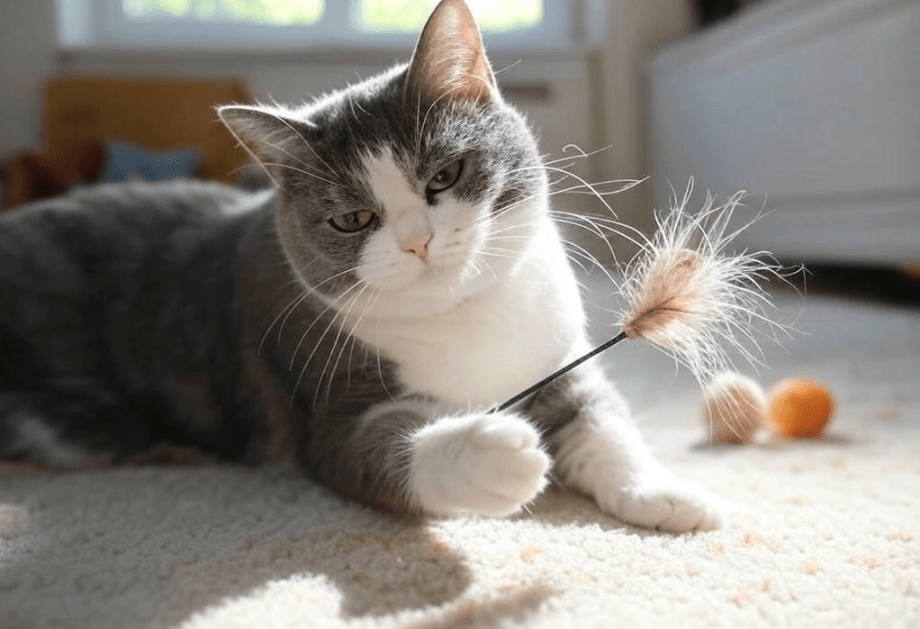
Domestic Shorthairs have unique sensitivities, so safety is paramount when choosing flea collars or treatments. Follow these guidelines:
Check Ingredients: Avoid collars with permethrin, which is toxic to cats. Opt for cat-specific products, as dog flea collars can be harmful.
Monitor for Reactions: Watch for signs of irritation, lethargy, or vomiting after applying a collar or treatment. Remove the collar immediately if adverse reactions occur.
Consult Your Vet: If your Domestic Shorthair has health conditions or is pregnant, seek veterinary advice before starting any flea treatment.
Fit Matters: Ensure the collar isn’t too tight or loose to prevent choking or skin abrasions.
How to Choose the Best Flea Collar for Your Domestic Shorthair
Selecting the right flea collar depends on several factors:
Lifestyle: Outdoor Domestic Shorthairs need robust protection like the Seresto collar, while indoor cats may do well with milder options like Hartz.
Flea Severity: For heavy infestations, combine a collar with topical or oral treatments.
Age and Health: Kittens and senior cats may require gentler, natural collars.
Budget: Balance cost with effectiveness; premium collars like Seresto save money over time.
Application Tips for Flea Collars
Proper Fit: Adjust the collar to allow two fingers’ space for comfort.
Regular Checks: Inspect the collar weekly for wear and tear or skin irritation.
Combine Treatments: Use environmental controls to prevent re-infestation.
Preventing Flea Infestations in Domestic Shorthairs
Prevention is key to keeping your Domestic Shorthair flea-free. Follow these tips:
Regular Grooming: Brush your cat weekly with a flea comb to catch fleas early.
Clean Environment: Vacuum carpets and wash bedding regularly to remove flea eggs and larvae.
Year-Round Protection: Use flea collars or treatments consistently, as fleas can thrive indoors during winter.
Multi-Pet Households: Treat all pets simultaneously to prevent cross-infestation.
Common Myths About Flea Collars for Domestic Shorthairs
Myth 1: Flea Collars Are Harmful to Cats
When used correctly, cat-specific flea collars are safe. Always choose products designed for cats and monitor for adverse reactions.
Myth 2: Flea Collars Work Instantly
Most collars take 24-48 hours to kill existing fleas. For faster relief, pair with an oral or topical treatment.
Myth 3: Natural Collars Are Always Better
Natural collars are safer for sensitive cats but may be less effective in high-flea areas. Consult your vet for the best option.
Conclusion
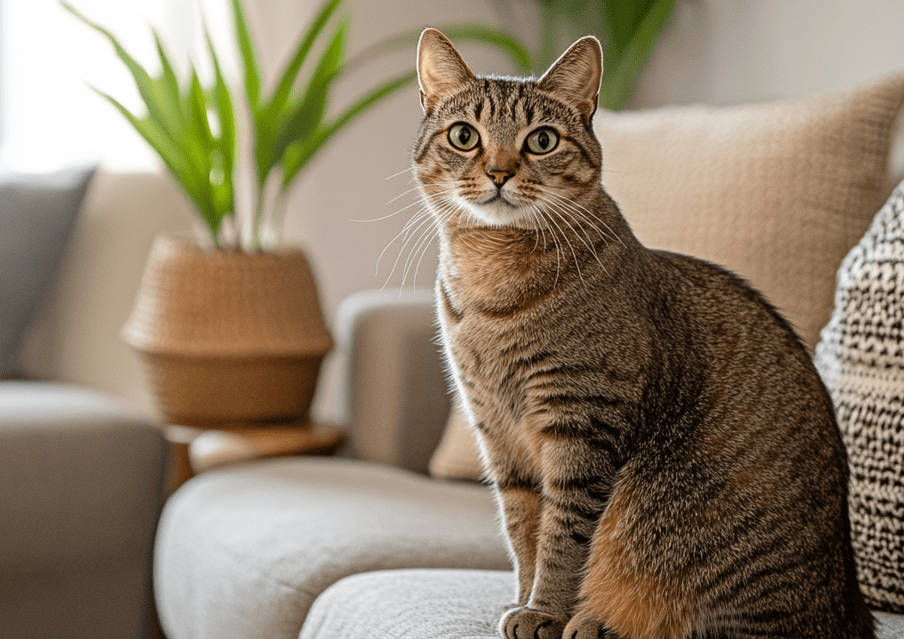
Flea collars for Domestic Shorthairs are an effective, convenient solution for protecting your cat from fleas and ticks. By choosing a high-quality collar like Seresto, Hartz, or Only Natural Pet, and combining it with other treatments and preventive measures, you can keep your Domestic Shorthair healthy and comfortable. Always prioritize safety by selecting cat-specific products, monitoring for reactions, and consulting your veterinarian. With the right approach, you can eliminate fleas and prevent future infestations, ensuring your Domestic Shorthair thrives in a flea-free environment.
For more information on flea control or to explore additional products, consult your veterinarian or trusted pet care resources. Your Domestic Shorthair deserves the best protection, and with the right flea collar, you can provide just that.

